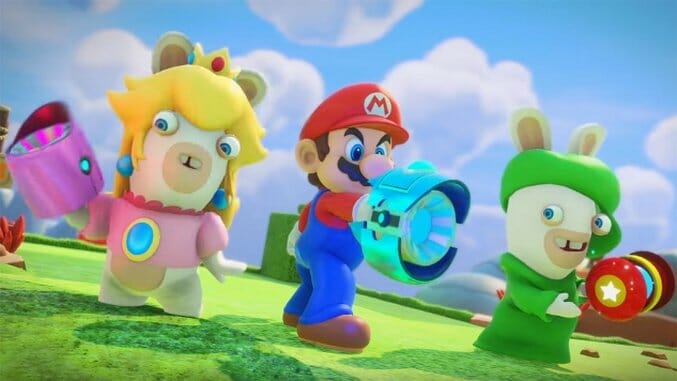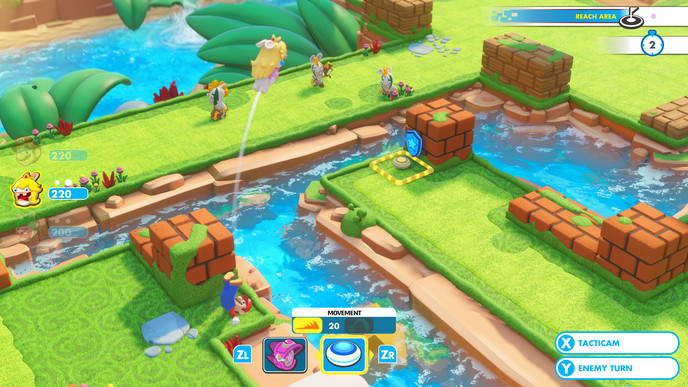How Movement Makes Mario + Rabbids Kingdom Battle a Different Kind of Tactical RPG
Games Features Mario + Rabbids
Movement is always crucial to tactical role-playing games like Fire Emblem or XCOM. I mean, yeah, knowing where you can go and what you can do there is a defining part of pretty much every kind of videogame, but few genres spell it out as plainly as the tactical RPG, where you’re always standing on a map that’s literally split up with blinking squares and glowing lines to relay exactly where you can and can’t go at any point. Every decision you make in these games should be governed by your awareness of the distance your units can move and the scope of their attack ranges. You can’t effectively plot the tactics that give the genre its name without that knowledge of the map and the limitations on your ability to move upon it.
Mario + Rabbids Kingdom Battle isn’t a typical tactical RPG, though, and one of the most obvious ways it stands out from the competition is in how it approaches movement. Instead of just moving a unit from one square to another, like a less rigid version of chess, you’ll have to exploit a variety of more open-ended options for shuttling your soldiers across the field.
Perhaps the most useful is the team jump move. If any of your characters move onto a square occupied by another, they’ll do a quick little Cirque du Soleil tumbling routine, with one jumping on the other’s legs and getting hurled through the air to a square they couldn’t otherwise have reached. It drastically expands the map for you, letting you quickly penetrate the enemy’s position, or making it easy to get behind the most advantageous cover on the field. Instead of limiting you to the actual range of movement defined by your character’s abilities, this opens up new opportunities for both offense and defense.
You don’t just move for position in Mario + Rabbids. Every unit has a slide attack, where they can barrel into an enemy like Pete Rose running down Ray Fosse in the 1970 All-Star Game. The slide attack is a vital tool because not only does it deal damage, but you can still move your unit afterward, and even perform your regular attacks. Smart players will regularly slide hard into the bad guys before scurrying back behind a rocky outcropping, where they can take aim and deliver another shot with their weapon of choice. That combo will make quick work of lower-powered enemies throughout the game’s early stages.
In keeping with the Mario theme, there are also pipes that often crisscross the battlefield. As you probably expect from previous experience in the Mushroom Kingdom, if you pop into one you’ll be transported to its other side, sometimes all the way across the board. Your enemies can use them, too, so knowing exactly where the pipes are and where they lead to is an important aspect of any battle that features them. They can easily upend your situational awareness of the battlefield.
Along with the game’s colorful, Mario-inspired aesthetic, this focus on motion makes Mario + Rabbids feel faster and more playful than most tactical RPGs. Despite not being designed by Nintendo, the company’s influence is clear, and shines through most visibly in its player-friendly approach to movement.
Garrett Martin edits Paste’s games and comedy sections. He’s on Twitter @grmartin.
